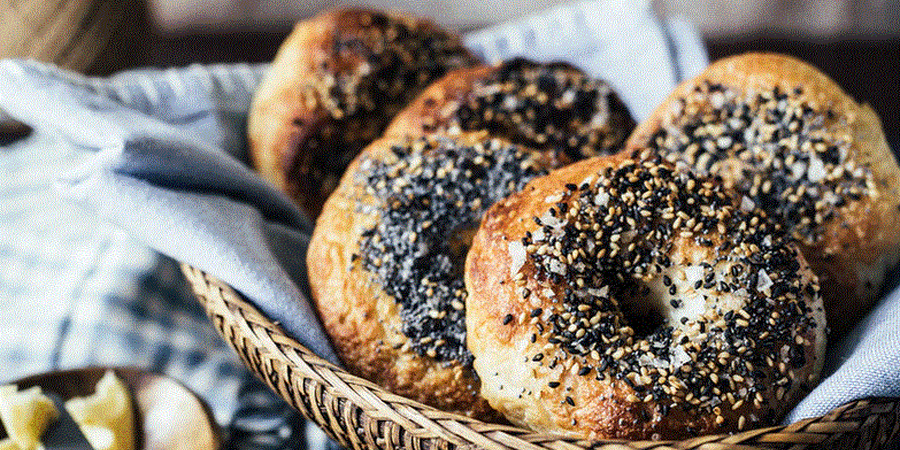Philadelphia, PA - As we get ready to kick-start a new year, we are ready to leave 2020 behind and provide a warm and toasty pairing for 2021! The ‘holiest’ food holiday – National Bagel Day – is right around the corner on January 15.
Bagels in Philadelphia
In Philadelphia, the top five flavors of grocery store bagels include plain, everything, cinnamon raisin, blueberry & cinnamon.
National Bagel Data
*Source IRI - based on bagel packages sold/purchased in 2020 through 11/22/2020
- Top five cities for grocery store bagel consumption: Los Angeles, New York, Baltimore/Washington D.C., Philadelphia, Chicago
- The top five flavors for grocery store bagels nationwide: Plain, Everything, Cinnamon Raisin, Blueberry, and Cinnamon
- Thomas’ top five most popular bagel flavors nationwide: Full-size varieties of Plain, Everything, Cinnamon Raisin, Blueberry, and Cinnamon
The History of the Bagel
- In 2020, more than 356 million packages of bagels were sold at grocery stores across the country.
- In 2020, more than 198 million Thomas’ bagel packages were sold.
- Bagels saw the second-highest year-over-year increase of at-home consumption of any food category due to the pandemic.
- The 10 most popular bagel toppings nationwide are cream cheese, butter, flavored cream cheese, cheese, jelly/jam, eggs, deli meat, margarine, peanut butter or other nut butter, and bacon.
- The average person eats more than 11 bagels per year.
- The origins of the bagel have been long debated. Still, most historians agree that the chewy circular bread first debuted in 1610 in Krakow, Poland.
- Why is there a hole in the middle of bagels? In the past, vendors threaded the hole-shaped bread onto dowels and hawked them on street corners.
- In Germany, variations of the word bagel are beigel, meaning ring, and bugel, meaning bracelet.
- Bagels are the only bread that is boiled before it’s baked.
- In the early 1900s, bagel makers worked in teams of four. Two people would make the dough and shape the bagels, one boiled the bagels, and the fourth baked them.
